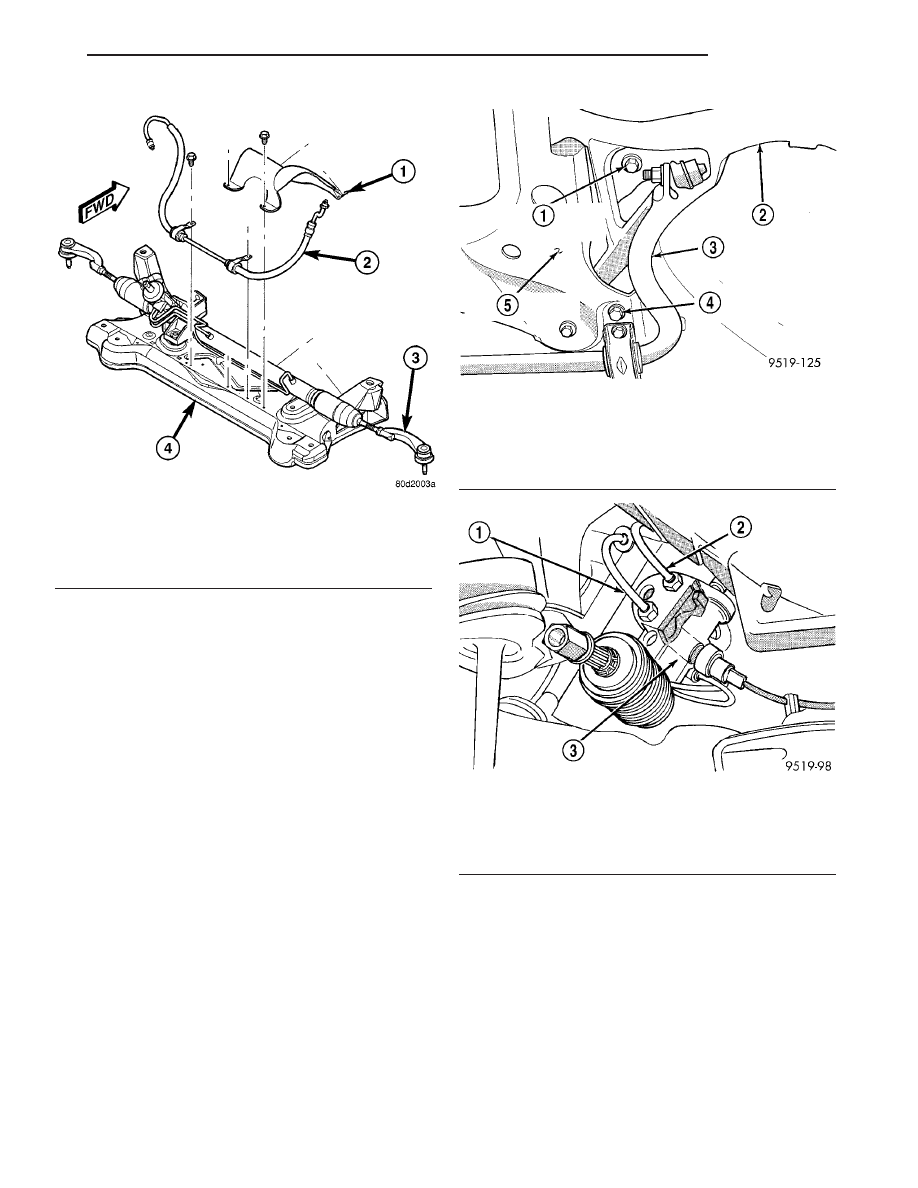Chrysler Sebring, Stratus sedan, Sebring Convertible. Manual - part 556

(16) Remove brake tube routing bracket from left
lower control arm rear mounting bolt.
(17) Disconnect fuel tube bundle routing support
above crossmember.
(18) Position transmission jack under center of
front suspension crossmember to support it.
(19) On each side of the vehicle, remove the 2 bolts
attaching the front and rear of the front suspension
crossmember to the frame rails of vehicle (Fig. 9).
(20) Using transmission jack, lower front suspen-
sion crossmember enough to allow steering gear to be
removed from crossmember. When lowering front
suspension crossmember, do not let crossmem-
ber hang from lower control arms, weight of
crossmember must be supported by transmis-
sion jack.
(21) Remove power steering pressure and return
hoses from the power steering gear fluid ports (Fig.
10).
(22) Remove wiring harness connector from power
steering fluid pressure switch.
(23) Remove 4 bolts fastening power steering gear
to front suspension crossmember.
(24) Remove power steering gear from front sus-
pension crossmember.
(25) Transfer required parts from removed gear to
replacement gear if a new gear is being installed.
DISASSEMBLY
(1) Using a screwdriver, pry the sleeve out of the
mounting bolt isolator (Fig. 11).
(2) Pry the mounting bolt isolator bushing from
the steering gear mounting bracket.
ASSEMBLY
(1) Lubricate replacement mounting bolt isolator
bushing using Mopar, Silicone Spray Lube or an
equivalent.
(2) Install the mounting bolt isolator bushing into
the steering gear mounting bracket from the bottom
side of the bracket (Fig. 12).
Fig. 8 Pressure Hose Mounting To Crossmember
1 - HEAT SHIELD (TYPICAL)
2 - PRESSURE HOSE
3 - POWER STEERING GEAR
4 - FRONT SUSPENSION CROSSMEMBER
Fig. 9 Crossmember To Body Attaching Bolts
1 - CROSSMEMBER FRONT MOUNTING BOLT
2 - LOWER CONTROL ARM
3 - STABILIZER BAR
4 - CROSSMEMBER REAR MOUNTING BOLT
5 - FRONT SUSPENSION CROSSMEMBER
Fig. 10 Power Steering Pressure And Return Hose
At Steering Gear
1 - POWER STEERING PRESSURE HOSE
2 - POWER STEERING RETURN HOSE
3 - POWER STEERING GEAR
JR
GEAR
19 - 23
GEAR (Continued)